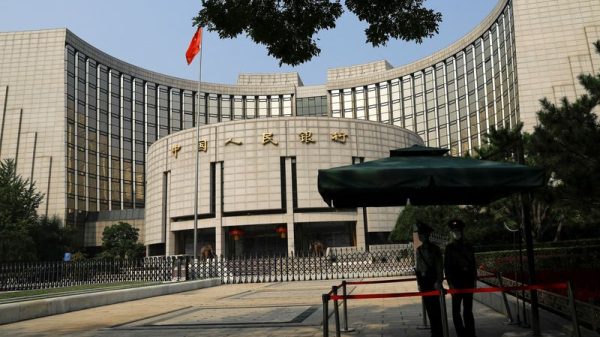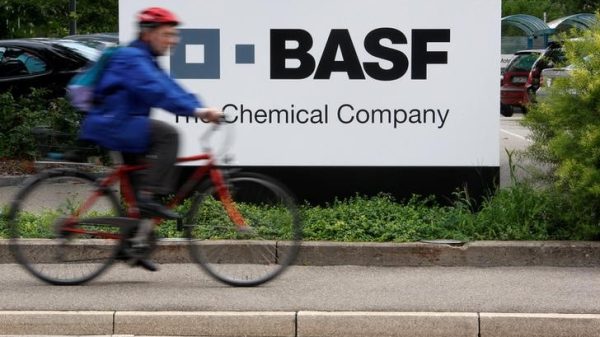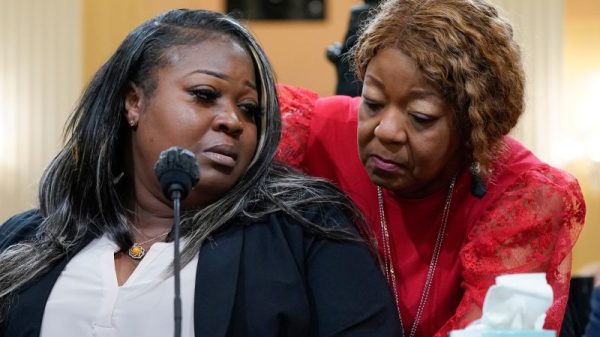Starwood Property Trust (NYSE: STWD) announced its third-quarter earnings for 2024, reporting distributable earnings of $159 million, or $0.48 per share, and GAAP net income of $76 million, or $0.23 per share. The real estate investment trust highlighted a commitment of $2.1 billion towards new investments, with a significant portion outside of commercial lending. The company’s commercial lending segment contributed $190 million in distributable earnings, while the residential lending segment maintained a $2.5 billion on-balance sheet portfolio. Starwood Property Trust also reported enhancements to liquidity, including a $392 million common stock issuance and a $400 million senior unsecured note issuance.
Key Takeaways
Distributable earnings stood at $159 million, with GAAP net income at $76 million.
$2.1 billion committed to new investments, 60% of which are outside commercial lending.
Commercial lending contributed $190 million in distributable earnings; residential lending portfolio at $2.5 billion.
Enhanced liquidity through $392 million common stock and $400 million senior unsecured note issuances.
Anticipated interest rate reductions and spending in the AI sector expected to drive U.S. economic growth.
Tech companies like Amazon (NASDAQ:AMZN) requiring office returns could influence commercial real estate dynamics.
Company Outlook
Starwood plans to increase investment pace and leverage credit capacity as market conditions improve.
No corporate debt maturities until the second half of 2026.
Strong pipeline in commercial real estate lending, with transaction volumes rebounding.
Company is poised for growth, targeting an investment-grade rating.
Bearish Highlights
Foreclosed on two multifamily properties in Texas, currently under LOI for sale.
Increase in five-rated loans, primarily in Texas multifamily assets and office properties in Brooklyn and Dublin.
Challenges with non-accruals acknowledged, despite optimism about liquidity and transaction volumes.
Bullish Highlights
Infrastructure lending added $23 million in distributable earnings.
Significant opportunity for private credit to fill gaps left by regional banks.
Strong performance and positive outlook in the conduit market.
Misses
Decrease of $60 million in four-rated loans.
Elevated expenses faced by a $239 million mixed-use multifamily and hotel asset in Dallas.
Q&A Highlights
Jeff DiModica discussed capital allocation, indicating a potential return to a higher CRE loan percentage.
Success in energy infrastructure investments, with mid to high teens returns.
Firm’s conservative approach, focusing on smaller loans for stable, profitable returns.
Starwood Property Trust’s third quarter earnings reflect a company that is managing its portfolio with a strategic eye on growth and liquidity. With a strong financial position and a cautious yet opportunistic approach to investment, the company appears well-positioned to navigate the evolving real estate market.
InvestingPro Insights
Starwood Property Trust’s (NYSE: STWD) recent earnings report can be further contextualized with key financial metrics and insights from InvestingPro. The company’s market capitalization stands at $6.48 billion, reflecting its significant presence in the real estate investment trust sector.
One of the most notable InvestingPro Tips is that Starwood pays a significant dividend to shareholders, which aligns with the company’s reported distributable earnings of $0.48 per share. This is further supported by the impressive dividend yield of 9.76%, making it an attractive option for income-focused investors. Additionally, InvestingPro highlights that Starwood has maintained dividend payments for 16 consecutive years, demonstrating a strong commitment to shareholder returns even in challenging market conditions.
The company’s P/E ratio of 17.65 suggests that investors are willing to pay a premium for Starwood’s earnings, possibly due to its strong market position and dividend history. This valuation metric, combined with the fact that Starwood’s stock is trading near its 52-week low, could indicate a potential opportunity for value investors.
InvestingPro Data shows that Starwood’s revenue growth stands at 8.0% over the last twelve months, with a robust gross profit margin of 90.24%. These figures underscore the company’s ability to generate profits from its operations, which is crucial for maintaining its dividend payments and funding new investments.
It’s worth noting that InvestingPro offers 8 additional tips for Starwood Property Trust, providing investors with a more comprehensive analysis of the company’s financial health and market position.
Full transcript – Starwood Property Trust Inc (NYSE:STWD) Q3 2024:
Operator: Greetings and welcome to the Starwood Property Trust Third Quarter 2024 Earnings Conference Call. At this time, all participants are on a listen-only mode. A question-and-answer session will follow the formal presentation. [Operator Instructions] Please note this conference is being recorded. At this time, I’d like to turn the conference over to your host, Zach Tanenbaum, Head of Investor Relations. Zach, you may begin.
Zach Tanenbaum: Thank you, operator. Good morning and welcome to Starwood Property Trust earnings call. This morning, the company released its financial results for the quarter ended September 30, 2024, filed its form 10-Q with the Securities and Exchange Commission and posted its earnings supplements to its website. These documents are available in the Investor Relations section of the company’s website at www.starwoodpropertytrust.com. Before the call begins, I would like to remind everyone that certain statements made in the course of this call are not based on historical information and may constitute forward-looking statements. These statements are based on management’s current expectation and beliefs and are subject to a number of trends and uncertainties that could cause actual results to differ materially from those described in the forward-looking statements. I refer you to the company’s filings made with the SEC for a more detailed discussion of the risks and factors that could cause actual results to differ materially from those expressed or implied any forward-looking statements made today. The company undertakes no duty to update any forward-looking statements that may be made during the course of this call. Additionally, certain non-GAAP financial measures will be discussed on this conference call. Our presentation of this information is not intended to be considered in isolation or as a substitute for the financial information presented in accordance with GAAP. Reconciliations of these non-GAAP financial measures to the most comparable measures prepared in accordance with GAAP can be accessed through our filings with the SEC at www.sec.gov. Joining me on the call today are Barry Sternlicht, the company’s Chairman and Chief Executive Officer, Jeff DiModica, the company’s President, and Rena Paniry, the company’s Chief Financial Officer. With that, I’m now going to turn the call over to Rena.
Rina Paniry: Thank you, Zach, and good morning, everyone. This quarter, we reported distributable earnings, or DE, of $159 million, or $0.48 per share. GAAP net income was $76 million, or $0.23 per share. The difference was driven by a higher CECL reserve, which I will discuss shortly. Across businesses, we committed $2.1 billion towards new investments this quarter, with 60% of our investing in businesses other than commercial lending, which now makes up just 56% of our assets. I will begin this morning with commercial and residential lending, which contributed DE of $190 million to the quarter, or $0.57 per share. In commercial lending, we originated $848 million of loans, of which we funded $635 million and an additional $134 million on pre-existing loan commitments. Repayments for the quarter totaled $1.1 billion, nearly twice that of last quarter, bringing year-to-date repayments to $2.6 billion. Our $14.6 billion loan book ended the quarter with a weighted average risk rating of 3.0, consistent with prior quarter. Most of our borrowers continue to support their assets, investing over $2 billion of fresh equity since the beginning of last year. On the topic of CECL, our reserve increased by $65 million to a balance of $445 million, of which 71% relates to office. Together with our previously taken REO impairments of $183 million, these reserves represent 4.1% of our lending and REO portfolios and translate to $1.86 per share of book value. Jeff will discuss our risk rating changes with you in greater detail. Next (LON:NXT), I will turn to residential lending, where our on-balance sheet loan portfolio ended the quarter at $2.5 billion. Prepayment speeds decreased slightly while spreads tightened, leading to $58 million of repayments and a $22 million net positive mark-to-market for GAAP purposes. This mark includes a $97 million positive mark on our loan, offset by a $76 million negative mark on our hedges, which provided $25 million of cash during the quarter. Our retained RBS (LON:NWG) portfolio ended the quarter at $423 million, with a slight decrease from last quarter driven by repayments. In our property segment, we recognized $14 million of DE, or $0.04 per share, in the quarter, driven by our Florida Affordable Multifamily Portfolio. We completed the rollout of the 2024 HUD maximum allowed rent levels, excluding the 3.8% state-mandated holdback we expect to implement next year, which resulted in $1.6 million of higher NOI in the quarter. As you are aware, these properties were in the path of the recent hurricanes in Florida, but we did not suffer any material damage from the storms. Nine of the properties suffered roof and/or water damage, all of which would be covered by insurance to the extent in excess of our deductible. Turning to investing and servicing, this segment contributed DE of $38 million, or $0.12 per share, to the quarter. In our conduit, Starwood Mortgage Capital, we completed four securitizations, totaling $398 million at profit margins that were at or above historic levels. This brings our year-to-date total to 12 securitizations for approximately $1 billion. We expect to end the year with our highest origination volumes in the past five years. In our special servicer, our active servicing portfolio ended the quarter at $8.8 billion. We had $1.6 billion of new transfers, nearly 80% of which were office. Our named servicing portfolio increased to $107 billion, the highest level in almost two years, driven by new assignments of $13 billion. In our CMBS portfolio, we had purchases totaling $122 million during the quarter, including our first Freddie Mac (OTC:FMCC) BP (NYSE:BP) for $77 million at an unlevered yield of 10.3%. The deal is secured by $1 billion of collateral, consisting of 27 floating-rate multifamily loans. Finally, on this segment’s property portfolio, we sold one asset for $18 million in proceeds, resulting in a net GAAP gain of $6 million and a small DE gain. Including my business segment discussion is infrastructure lending, which contributed DE of $23 million or $0.07 per share to the quarter. We committed to $527 million of new loans, of which we funded $440 million, and had repayments of $410 million, increasing the portfolio to $2.5 billion. Subsequent to quarter end, we completed our fourth infrastructure CLO for $600 million with a weighted average coupon of SOFR plus 193 and an 83% advance rate. This brings our term non-mark-to-market CLO financing to 65% of infrastructure debt. In connection with this CLO, we fully redeemed our first infrastructure CLO. And finally this morning, I will address our liquidity and capitalization. Since our last earnings call, we significantly enhanced our liquidity position with the September issuance of $392 million of common stock and the post-quarter issuance of $400 million of 5.5 year, 6% senior unsecured sustainability notes, which we swapped in order to better match our floating asset base. In addition to repayments we expect to receive in the fourth quarter, these funds will be used to repay our December and March high yields maturity. After that, our next corporate debt maturity is not until July 2026. Our current liquidity stands at $1.8 billion, which does not include liquidity that could be generated through sales of assets in our property segment, leveraging unencumbered assets or debt capacity that we have via the unsecured and term loan B market. We continue to have significant credit capacity across our business lines with $9.8 billion of availability under our existing financing lines and unencumbered assets of $4.6 billion. Our adjusted debt to undepreciated equity ratio ended the quarter at 2.14x, a decrease from 2.29x last quarter, and at its lowest level in over two years. With that, I’ll turn the call over to Jeff.
Jeff DiModica: Thanks, Rina. I’ve been a little under the weather, so I’ll apologize in advance for my voice. Fifteen years after starting STWD, we’re the most diverse mortgage REIT with a market cap larger than our four largest peers combined. We have deployed over $100 billion in that time, and shareholders have received a 10.5% total return since our inception and $7.7 billion in dividends, a dividend which we have never cut. This includes the spinoff of what became Starwood Waypoint Homes, which ultimately merged into Invitation Homes (NYSE:INVH). While we are proud of our diversification and scale, management and our board, who collectively own almost $400 million of our stock, are most proud of our consistency, as we have also earned a similar total return in the last 12 months and the 12 months before that, 24 of the most difficult months for commercial real estate. We invested over $2 billion in the quarter, more than half of which came from outside our CRE lending business. We have invested every quarter since inception. Our loan pipeline is the strongest it has been in two years, and we expect our pace of commitments to continue to increase. With record amounts of cash in money market funds and investors reaching for yield early in a rate cut cycle, we have seen significant spread tightening across our markets. Although longer rates have been more sticky, the yield curve continues to normalize, and we have seen SOFR forward curve move lower as the market prices in more Fed cuts, likely as early as Thursday and again in December. This combination has brought liquidity and optimism back to the CRE markets for the first time since the Fed began raising rates and will help repair value in our industry’s weaker legacy assets. Banks are pulling back from direct lending and make much higher ROEs lending to us than competing with us after capital charges. We expect this to continue and expect our secured and unsecured borrowing costs to continue to improve and our playing field to continue to expand into 2025. Our goal is to significantly increase our investing pace as we work down our nonaccrual and REO assets in the coming years. To that end, we opportunistically access the capital markets three times so far this year. If you look at a graph of the spread of the high yield bond index over the last 12 months, it started at 500 basis points over Treasuries and only twice got down to roughly 300 over and only stayed there for a couple of days each time. We put ourselves in position and were able to issue unsecured debt at the most advantageous level seen in all of 2024. With significant oversubscriptions that allowed us to improve pricing and achieve the tightest spread our corporate debt has traded at this interest rate cycle. Our September note offering swapped to SOFR plus 260 basis points on a repo equivalent basis, hundreds of basis points inside where we would have issued a year prior and 50 basis points tighter than we would have issued just a week before. We did not have another corporate debt maturity until the second half of 2026 and repayments have picked up so we expect to be able to continue to grow regardless of capital market conditions. We may not be able to issue at the exact spread sites in the future, but with $4.6 billion in unencumbered assets, we will always be ready. Our plan as we head into 2025 is to continue to put ourselves in position to opportunistically grow our balance sheets and eventually create capital that creates excess earnings as we come out the other side of the cycle. In CRE lending, our pipeline is strong and CRE transaction volume has returned, both in refinancing of properties that achieved their business plans from the issuance peak in 2021 and on financing new purchase transactions that buyers and liquidity have reentered the market. We also had elevated repayment activity, record low future funding commitments and record low construction exposure, all positives as we return to being fully on offense. Although we are likely through the worst of the CRE credit cycle, where our industry was collateral damage of the Fed’s aggressive rate hikes, many of these loans, particularly office loans, will take longer to optimize our exit on. Our diversified business model has allowed us to be patient as we work with our manager, Starwood Capital, which has over $100 billion of investment to improve asset level performance and optimize exit strategies on our difficult assets as we prepare to ultimately find the right window and market environment in which to exit these investments. I will now take a minute to talk about credit and our risk rating changes in the quarter. Subsequent to quarter end, we foreclosed on two multifamily properties in Texas, both of which we have under LOI at our distributable earnings basis and sold the Portland Multi we talked about in prior quarters at our distributable earnings basis. Our four-rated loan decreased by $60 million in the quarter despite us moving three loans from risk rating three to risk rating four. The largest of those three is a $239 million mixed-use multifamily and hotel asset in Dallas that is achieving our original underwritten revenue projections, but the property has experienced elevated expenses, putting pressure on margins and resulting in a lower than anticipated debt yield. We are in negotiation with both the sponsor and the flag, and we will report back in the coming quarters. The other two are multis where the sponsor has recently indicated they don’t have the money to continue to invest in the projects and have paused on renovations, and we will work with the borrower while pursuing legal remedies on both as quickly as possible to invest in these renovations, increase rents and occupancy, and then decide whether to hold or exit. The first of the multis is an $84 million loan in Florida with a mid-4% debt yield today that we believe we can stabilize and either exit at our basis or choose to hold as an accretive investment going forward. The second multi is a $44 million loan outside Atlanta, a submarket that has seen rents fall slightly this year, and we will finish renovations and improve performance before deciding when to sell. Our five-rated loans increased from $252 million to $549 million in the quarter with four assets moving into this category, but two of those representing half of the $297 million increase in five-rated loans are multifamily assets in Texas that I just told you are under LOI to be sold at our basis. The other two new fives are a $125 million loan on a now-empty office condo in Brooklyn and a $28 million loan on an office portfolio in Dublin, Ireland. The Brooklyn loan moving to a five is the result of the bifurcation of that loan where we upgraded $137 million of the loan that is allocated to a 27-year credit tenant lease and downgraded $125 million of the loan that remains vacant today to a five risk rating that is on non-accrual. This portion of the building has seen significant single-tenant leasing demand since we wrote the loan, but an LOI has not been signed to date and we will report back when we have leasing activity. The Dublin portfolio loan has recently negotiated a 100% lease on the marquee building in the portfolio, but this loan was moved to a five upon the sponsor’s unwillingness to fund tenant improvements or TIs on that lease or CapEx on the portfolio. The portfolio is 64% leased today with a 5.2% debt yield and we expect the loan to go into covenant default in 2025. To wrap up my discussion on CRE lending, I will note that net of the two Texas multifamily assets we expect to sell at our basis, the total add to fours and fives is $90 million in the quarter for just under one half of 1% of our assets. We continue to see great opportunities in our energy infrastructure lending segment. The tailwinds driven by massive power needs have lowered our portfolio LTV today to just over 50% and we continue to earn outsized returns in this sector. We committed $527 million to new loans in the quarter at an over 15% expected levered IRR. This portfolio continues to finance well in both the repo and CLO markets and as Rina said we priced our fourth CLO in our energy infrastructure business subsequent to quarter end at our lowest spread inclusive of issuance costs to date. Nowhere in our book is spread compression more obvious than in our RESI book where secure side senior bonds continue to tighten. I will note that we extended our rate hedges on our RESI loan portfolio this spring as our hedges had rolled down the curve putting more weighting on the zero to three-year part of the curve and less on the three to ten-year part of the curve. Given the rate sell-off in the three to ten-year part of the curve in the last month, this hedge adjustment has saved us over $10 million since we executed it and we will continue to monitor and adjust hedges as market conditions change. In REIT we brought in 16 new servicing assignments in the quarter, more than half of which came in through our new Starwood Solutions efforts. Solutions also secured two new advisory mandates in the quarter including our First Bank (NASDAQ:FRBA) client. As Rina mentioned, S&C continues to have a strong year and we continue investing in our CMBS portfolio at attractive spread. With that I will turn the call to Barry who will unfortunately be unable to join us for Q&A.
Barry Sternlicht: Thank you, Zach, thank you Rina and thank you Jeff and thank you for joining us for this call. I’ll first start with some comments on the market in general. The Category 5 hurricane that’s been hanging over the commercial real estate market in the United States is finally clearing and we had our first rate reduction and hopefully we’ll get another one tomorrow. I think you can expect rates to continue to fall as inflation falls and inflation is falling primarily because of the delayed impact of the rent component of CPI which as you know is a third of CPI and as rents are basically almost flat now across the United States and the government’s readings are still too high. I also think the consumer will be taking a breather. Wage growth is slowing, it has record credit card debt and we have one of the lowest savings rates we’ve ever had at 2.7% but the consumer is employed and he is happy to borrow money but as I think the economy does slow and then you have the impact of course of the election uncertainty. Whoever wins it’s not so much whoever wins it’s what they said and what their actual policies would be, and I think that will also create some hesitation by both the consumer and companies to take forward their capital spending in the face of radically different policies that may or may not be enacted by the respective congresses. I think U.S. growth though has been unique, it’s been exceptional but it’s really exceptional to the U.S. partly for some of the wrong reasons like our massive fiscal spending which is again going forward regardless of Jerome Powell’s interest rate policy. We will spend trillions of dollars on infrastructure, CHIPS Act, the Inflation Act and several other policies. And there’s another spending that’s going on that’s the equivalent of a stimulus package which is the AI spending, data centers, EVs, batteries but just that from the generals the magnificent seven is hundreds of billions of dollars this year, three or four hundred billion dollars multiplied by the debt it’s another trillion dollars of spending. One of the reasons I think consumers don’t feel wonderful about this economy because it’s so narrow the spending of Amazon, Meta, Facebook (NASDAQ:META), Google (NASDAQ:GOOGL), Oracle (NYSE:ORCL), NVIDIA (NASDAQ:NVDA) now on data centers doesn’t impact the average American. And you actually see the strength in things like construction starts which last month, construction jobs this last month rose 37,000 jobs when they should be falling because of what we the 500 base point increase in rates which has dramatically hit private construction like single-family homes, multi-family homes which are just completing their significant expansion and logistics starts. So and I think also you see the impact of what Rick Reeder at BlackRock (NYSE:BLK) called the spending from the wealthy that’s 20% of the nation that houses a lot of significant portion of our nation’s wealth which is enjoying something on the order of 240 billion of interest income and they’re spending it on services. So Powell’s interest income is helping the wealthier part of the country that has savings to spend money on on things and particularly travel where you see the impact of all the spending from the significant money that people earn that they didn’t have before just assume interest rates were 2.5% and that’s an incremental $120 billion being spent in the economy mostly by the halves of the upper deciles of the U.S. population. So this U.S. outperformance is also likely exceptionalism is likely to continue because of the impact of AI rolling through our companies and it’s unique again to the United States. Our data center markets, our infrastructure is just the Virginia market alone is four times the size of the European installations and even that in Asia. So that exceptionalism which is of course reflecting our S&P where these companies reflect almost 35% of the stock market will continue as the impact of AI rolls through the P&Ls of our companies increasing productivity. And again having nothing to do nor will have anything to do with the interest rate policies of the Federal Reserve there’s only 13 million Americans employed in the manufacturing markets. And that’s where you’d most likely see the impact that in the housing market of high interest rates, because it’s not affecting a dramatic portion of the economy today notably the health care sector which has added nearly four million jobs health care government education since you started raising rates in May of ’22. So for real estate it means we can see the light at the end of the tunnel not sure how long the tunnel is going to go on for. But you can see supply dropping particularly in the multifamily market from 600,000 plus units this year to 230,000 units in 26. You also see logistics starts drop nearly 70% that both will restart at some point but it does set the pace the page for a new recovery there isn’t much in the way of office construction of course as the U.S. office markets continue to be injured particularly on the coast from a lack of or the benefit of work from home. But we are encouraged by companies like Amazon telling their employees that they have to be in the office five days a week and as the economy softens we’d expect the other tech giants to follow that lead. I think we are better in the office it doesn’t mean the markets in the United States will be great but good buildings are leased and you’ll expect the financing markets to bifurcate between the really good assets which will get financing and recently it was a CMBS completed just office assets in it almost something you couldn’t have thought about before. And the bad assets will find alternative uses probably supported by congressional and local and city credits that will help convert our cane and this bad office into something else whatever that might be or be torn down. So I do think as Jeff mentioned his comments there’s a secular change taking place in the markets the banks particularly the regional banks with $1.9 trillion of real estate debt are really not looking to increase their exposure and the changes in capital regs for the commercial banks mean that they really only want to be CMBS lenders and not balance sheet lenders anymore. There’s an enormous opportunity for private credit to take the place of the banks and to step up and I think this is a secular change not a cyclical change. And I think it poises us to be the leader in the private credit market and real estate being that we’re the largest public company in this space and we want to be the leader in this space. We want to grow significantly, and I think we’re positioned to do that now. As Jeff mentioned and we’re quite proud in my opening in the comment in the press release. We’re the only commercial mortgage REIT that has not cut its dividends since 2020, either in the pandemic or because of the rise in interest rates decimating the loan book. There still are issues in our portfolio but we’re grappling with that and we expect to be able to turn it on and we can safely say that we can really turn today from offense, or from defense to offense and it is exciting to see transaction volumes pick up with rates coming down and as Jeff mentioned a record pipeline of opportunities for us to explore underwrite and take advantage of our balance sheet and deploy the cash that we have and the capacity we have in our portfolio. Europe is healing as well and they expect rates to drop further in Europe than the United States but we’re cautious across the world between the U.S. about what the election will bring what the long-term impact might be on interest rates of the spending policies of either politician and we’ll be cautious as we’ve always been in taking on new commitments. But when you see the good things that have happened repayments have picked up, it’s freed up equity for us to invest in other transactions. Our conduit business is having a great year one of the best in the past five. I expect even as rates come down the liquidity of our resi book will increase and you also see our leverage ratio is the lowest in our history. But I can recall at 2.1% so we’re producing earnings with less leverage which is pretty powerful story. So I’m excited about where we are and where we can go and the team is resolved and hopefully taking advantage of this great opportunity we have to be the leader in our sector and to grow rapidly ultimately the goal of achieving an investment grade rating for our firm and then it’ll be really fun. So thank you all for your time and with that I’m going to turn the call over to the operator. Thank you.
Operator: Thank you. At this time we’ll be conducting a question-and-answer session. [Operator Instructions]. Our first question comes from Stephen Laws with Raymond (NS:RYMD) James. Please proceed with your question.
Stephen Laws: Congrats on a solid quarter and nice to see the acceleration and origination activity. Jeff kind of along those lines you know high liquidity, low leverage, accelerating originations. You know I know you do watch leverage because you’re pursuing an investment grade rating. But can you talk about the investment capacity as you deploy that and kind of what kind of incremental earnings you know do you think that can generate as you shift more to office?
Jeff DiModica: Yes. Thank you, Stephen. Excuse me, I may cough a little bit. I apologize I’m pretty under the weather. So in terms of investment capacity and the ability to sort of grow earnings here. It depends on a few things. Obviously our ability to move assets out of non-approval or REO would create earnings capacity in the easiest form in the form of growing through equity and debt in some combination and you’ve seen us this year issue equity once and debt twice. If we did continue to issue equity and debt to grow, I sort of think of it as at a 2.1 in terms of leverage it’s for every dollar of equity that you that you issued you could issue 2.1 dollars of debt. Your debt costs you somewhere around 6%. We issued a 6% sixth year, six to five and a half year note in September and your equity costs you in the nines or somewhere around that. So you end up with a blended with 2.1 versus one somewhere around a 7% cost of new capital. Our historic ROE has been 12% to 13% and if we could put that 7% money back out at 12% you make 500 basis points. So for every billion dollars that you’re able to do in a combination of equity and debt if that’s how you choose to grow and maintain that leverage at 2.1, you would add $50 million to distributable earnings on a zero loss basis if you earned a 12 and paid an effective cost of 7. So if you did 2 billion you’d earn $100 million. We’ve told you that we have a little over a billion dollars on non-accrual today, so our goal is to earn $100 million incremental to offset that or start bringing down these non-accruals and REOs. We’re working hard to do that but hopefully that gives you some scale of what we think the power of growing the businesses. We are full steam ahead on trying to grow. We have the most significant pipeline that we’ve had since I think the fourth quarter of ’21 or maybe in the first quarter of ’22 as I look at our actionable pipeline list. There is less competition from banks. There is more competition from debt funds. It feels like we have a pretty good runway right now in energy infrastructure to continue to grow. We really like that sector as well and we’ll continue to look in a lot of different places. We did our first Freddie B piece this quarter so we’re looking there. We’re looking at CMBS B pieces but our goal is to grow and growing our way out of the drag of the non-accrual et cetera to make sure that we can continue to earn our core $0.48 is the main goal of the of the management team today.
Stephen Laws: Thanks. And a quick follow-up around the unsecured debt. You know as you look to increase the mix of unsecured debt on the balance sheet. Can you talk about any impact that may have on earnings or how much kind of higher cost secured debt are you going to be able to pay off without kind of a material shift in your cost of funds?
Jeff DiModica: Yes. So it’s interesting everybody here knows I think at this point that we have these accordion repo lines. It is the benefit that we pick up in having bank repo lines. The negative that we give up we’ve talked about in the past. We give up a little bit of recourse. We give up the ability for the bank to credit markup and we give up across all the assets. In return we get the lowest rate we can borrow at unsecured debt and we get the ability to accordion these lines. So when a dollar of cash comes into our system instead of earning a money market rate of 4% or whatever that is, we’ve been over this before but we will pay down the most expensive outstanding accordion repo line and the most expensive lines are SOFR plus 300, 325, some even at 350. So today you’d earn 8%, 8.5% on cash if you only had one dollar of cash. When we sit on a billion eight of cash like we are today we paid down the 350s. We paid down the 325s, the 300s, et cetera. So we’re probably paying something down more in line with 240 over 245 over today and the more cash we have the less we’re effectively getting paid on our cash. So when I look at our last high yield deal which we swapped to SOFR plus 270, that 270 to me on a repo equivalent is 260 because our bonds are semi-bond and our repos are monthly. So we pick up another 10 basis points there. So if we can continue to borrow at 260 over which the market’s a little wider than that today we opportunistically tapped it at the height of the high yield index in September but it’s not far from there. If we’re able to issue more high yield debt today in the 270 area and we’re sitting on this much cash it would be slight negative carry because we’d be paying down 230, 220, 210 over. And once we get invested and we get which is our goal here we get this cash invested and we can start using that cash to pay down things that are 270, 280, 290, 300 over we could get back to a point when we get fully invested here it should credit spreads remain where we are getting paid positive carry for the first time in our history to move from secured debt to unsecured debt. That’s when you will see us put our foot on the gas and try to move more to an unsecured model and along with our low leverage we believe that maintaining that higher portion of unsecured debt to overall secured debt would be what puts us in line for the ratings upgrade that Barry just spoke about and that is the Holy Grail here. So it’s a little bit confusing when we sit on a lot of cash we’re paying down we pay a little bit more negative carry when we’re sitting on less cash they could turn to positive carry but we’re looking at it every day the goal right now is to get fully invested. We have a lot of cash we have a great pipeline.
Operator: Our next question comes from Jade Rahmani with KBW. Please proceed with your question.
Jade Rahmani: Seems like a positive story is building around the commercial real estate recovery prospects. The one damper on that is the treasury market and I know you all have been sensitive in your comments around long-term treasuries and how that creates risk for refis. What are your views on how that might change the positive trajectory we’re currently seeing?
Jeff DiModica: Yes, Jade. It’s a great question. Barry would certainly take this one normally. The 10-year is obviously up today. The curve is normalizing and steepening. The thought that there’ll be more government expenditures and potentially creating inflation and growth is not great for the 10-year and that will have an impact on cap rates. I will say that it’s not all negative. If I look over a longer period of time over the last two years, I’ve been really focused on where’s SOFR in 2026. SOFR in 2026 is somewhere in the 375 area today after this big move. It was 350 just a couple of days ago. That is in the middle of the range of where we’ve been for the last couple of years. On this call last year, at Halloween of last year, SOFR in 26 was 460. So it’s significantly better than where we were, but it’s not as good as the 285 or so that we were at five or six months ago where we expected the Fed to be more aggressively cutting. I would say that our portfolio from a credit perspective, we certainly want lower SOFR. That will benefit us more than lower cap rates driven by the 10-year. So this move and this steepening of the curve doesn’t hurt our portfolio as much. But should we normalize somewhere around here? I think you will see cap rates potentially be slightly higher, obviously, with what’s happened in the 10-year. And you will see our ability to look at our entirety of our multi-books, et cetera, that might have a five and a half or six debt yield that we thought a week ago were easy to refine, might be a little bit more difficult to refine. But we think there’s enough capital out there and we’re certainly seeing liquidity. We talked about the two assets that we sold at our basis this quarter. That was in a similar rate environment to where we are now. And I think that the impact at this move will be fairly small. Should this move turn into something another 50 or 100 basis points higher, then we’ll reevaluate. But it’s certainly important to talk about. But I want to talk about the other side of it, because it’s really important. If rates do continue to go higher, it’s going to be because people have optimism about the economy. With that optimism, we’re going to expect to see more leasing on the office side. That’s what the commercial real estate markets are really hoping for. With that optimism and job growth and the things that will create inflation, we’re also going to see higher rents on the multi-side. We’ll see higher rents at hotels, higher ADRs at hotels. So you would assume that higher rates are going to come with a stronger economy. A stronger economy certainly offsets a tremendous amount of the difficulties that I talked about in the beginning of this that are rate imposed only. And in the meantime, we’ll continue to monitor our hedges across our book. We told you that, I told you in my prepared remarks that we extended our hedges on our entire resi book, and that saved us $10 million or $12 million. That’s before this move over the last 24 hours, probably up more than that by extending our hedges. We’re going to stay fully hedged in books like that and try to not have a treasury rate bet on in any way. We don’t do that. We don’t bet on FX. We don’t bet on direction of treasuries. We try to match our fixed inflating assets and liabilities. We’ll continue to. And hopefully a stronger economy is part of this higher rate environment that we’re headed into. And hopefully rates kind of stay here because we like lower volatility and we like seeing the activity that’s back in the real estate markets, and we don’t want to slow that down.
Jade Rahmani: Thank you very much. In the opening comments, you talked about the mix of new investment weighted toward non-CRE originations. Could you provide any additional color? Is that a ratio you expect to maintain? Is it a goal to reduce the CRE percentage, or is that just a snapshot of a moment in time?
Jeff DiModica: It’s a moment in time, Jay. We did just under a billion in CRE lending. We had a very strong quarter. In our CMBS originations business, we did the Freddie B piece, which we talked about. We bought some CMBS and we were pretty aggressive again on the energy infrastructure side, which we think is a great business today. I think you were probably 53% or 54% to 46% or 47% this quarter. I would expect that our core business, which is CRE lending, becomes 70% or so as I look at quarters going out. And we certainly think we have a pipeline that would be in line with that.
Operator: Our next question comes from Doug Harter with UBS. Please proceed with your question.
Doug Harter: As you guys think about executing the pipeline, should we think about that growth being funded by leverage normalizing or continuing to raise equity?
Jeff DiModica: Yes. Listen, we raised equity this year. If we wanted to stay within the normal band for our company, we’re at 2.14x leverage today, near the lowest we’ve ever been. Part of that is that we are sitting on more cash. When that gets invested, I would expect we’re more in the mid-twos. I think we have a great story to tell with the rating agencies as we stay below 2.8 or so. We’re pretty low. We have a lot of room to add more debt capacity. We haven’t raised as much debt as would stay in line with the 2.1 or certainly not the 2.5. We have room to issue not insignificant amounts more debt. We have $4.6 billion of unencumbered assets. We have room on our term loan to issue another billion dollars of incremental debt. My gut is, depending on where markets are at any given time and where things are, that we have significant capacity to issue more debt before we go to another part of our capital structure. We have room. If we get this money spent, we’re in spread stay here. I would expect that we continue to do what we said we want to do, which is increase the amount of unsecured debt on our balance sheet as a percentage of total debt to try to get to a ratings upgrade in the not-too-distant future. That would lean us towards that direction.
Doug Harter: I appreciate that, Jeff. Rina, on Woodstar, it seemed like the discount rate went up in the quarter despite rates going down. I’m just wondering if you could give us an update there.
Rina Paniry: Sure. Doug, our process for Woodstar valuation is to do an internal valuation in the interim quarters, and then we get an appraisal every year end, which is required by our partnership agreement for the JV. What we do each quarter is, we look at comparable sales that occurred not only in the quarter, but also over the previous 12 months. The comp set really just had a wide range of cap rates that got executed. The average ended up at the 4.6 that you see disclosed in our 10-Q as far as cap rate goes, so that’s really what drove that. No way to really know where the third-party appraiser is going to come in at year end, but I know last year the cap rate that we used ended up being really close to where the appraisers came in. Not sure about year-end valuation just yet, but that’s how we approach the process.
Jeff DiModica: Doug, we have a list of the last 25 or so that have traded similar to ours in our markets, over half a billion dollars in the last year and change, and that comes up with the same number that’s in the queue, and that’s the number that we’re using. I know people will look at where rates are at any given time. They certainly were lower at the end of last quarter than today, but we base it on where the market is.
Rina Paniry: Just a further point on that, we discussed it, I believe, at year-end last year that there is a 25-basis point portfolio premium in there, so if you look at it on a per-asset basis, your cap rate is really 25 basis points above what you see in the queue.
Operator: Our next question comes from Rick Shane with JPMorgan. Please proceed with your question.
Rick Shane: Look, as you work through the challenges in the portfolio, there basically are three paths. One is modification and extension of loans. Two is to sell the loans. Third is to foreclose and take the property. As you work through that process, what is the decision tree, and how much is that impacted by property type, geography? What are the criteria that help us understand how you’re going to remedy the portfolio?
Jeff DiModica: Yes, that’s a really good question, Rick. Thanks. At the end of the day, I think there are certain financial institutions who want to do what might look best for their financials as they report them, and that’s going to force them to either be a seller or a holder, and oftentimes a seller. There are certain less liquid companies that would look like us that might have to be a seller because they don’t have the capital to put into the assets to optimize the assets. They may not have the private equity sponsor that we have that has history of running today over $100 billion of equity assets to get to the point of creating enough value to where you want to take it to market, and then to really wait until you have a decision that this is the optimal time to take it to market as opposed to it’s the optimal time for my financials for me to make a decision. I think we always look at things and say, how can we best protect shareholder value by finding the right time and what we think we can do in terms of improving an asset and timing an exit? So having great liquidity and having access to tremendous liquidity really allows us to sit back and make the right decisions that we think are in the best interest of the shareholders and management in the board of $400 million of stock. So it’s our retirement as well, and we want to look at this as what’s the best way to get back every dollar that we think that as opposed to forcing ourselves into a long-term sale, into a sale that takes a loss today or sign up for a longer-term modification that effectively takes a loss over time because you’re giving up something in order to have a modification in earnings over the coming years. So we weigh those all against each other. We weigh where they are in the market, and we try to make a decision based on that. But we get to make a decision with clear eyes and a full heart that we want to be in an asset for a long period of time and we think there’s value there or else we would move on.
Rick Shane: Did you just tell us that you can’t lose, Jeff?
Jeff DiModica: I can’t lose. You’re a Friday Night Lights guy. I love it.
Rick Shane: Yes. I got your reference. Anyway, thank you for the answers, guys.
Operator: Our next question comes from Harsh Hemnani with Green Street. Please proceed with your question.
Harsh Hemnani: Maybe I think you touched on this a little bit, but given the feeling in the commercial real estate market, the improvement in fundamentals, how are you sort of looking at balancing the near term in terms of capital allocation given the relative value between perhaps infrastructure loans and commercial real estate lending? And then how does that maybe contrast with your longer-term strategic view where maybe you want commercial real estate loans to be less than 60% of the book overall?
Jeff DiModica: Yes. Listen, it’s a really good question. I think we’re happy that they’re less than 60% in the last couple of years and we’re 56% today as commercial real estate values have certainly come off of their peak. That doesn’t mean that that’s where we want it to be. I think if we felt like relative value was leaning significantly towards commercial real estate, we’d be happy doing 100% of our new business in commercial real estate. Balance has been good for us. We appreciate Green Street picking us up and covering us. We’ve pivoted this business over the last 15 years. Every couple of years we’ve sort of leaned a different direction. In 2015 and ’16, we didn’t like where lending values were going. We thought that spreads were getting too tight, and we thought it was a better time to be a buyer than a seller and we basically stopped writing loans and we acquired this $4 billion or so of a property pipeline. We’ve had stretches where we’ve been more significant on the resi side. Certainly over the last couple of years with uncertainty in the commercial real estate side and less volume on the commercial real estate side, we’ve been fortunate that that’s been met with an incredibly good investing environment for our energy infrastructure business. It’s midstream assets which include pipelines and power plants, sort of 50% or so each. The LTV on that book I think is down to 51.5%, the lowest it’s been. The term loans that are quoted in the secondary market average significantly above par today. That’s never been the case. We’ve been earning mid to high teens on that book as we’ve leaned in and really grown that in the last couple of years. We’re earning that because our liability cost has maintained its lower levels and never really spiked up as our liability costs in the CRE side moved up over the last couple of years. We still see that as really accretive. We’re fortunate that we have significant liquidity today that we are going to do all of the trades that we think are really smart in both CRE lending and in for today. So if either one knocked on the door with a great opportunity, we would take a full-size bite because our goal here is to grow and we think there are great opportunities to grow. My gut is the CRE market is just a much bigger market. If I’m comparing those two, the CRE market will go back to being 75% of what we do versus maybe 25 there and it could even be 80-20 because of the scale of that market in a recovery where we’re seeing opportunities where people have executed their business plans from the high-volume year of 2021 and they’re coming up to a time where they have to refinance. That’s a great opportunity for us where things are going to be turning over because we’re seeing equity come back into these markets. That’s an opportunity for us on new purchases. I expect to see that to continue to increase. I wouldn’t be surprised if we continue to increase our purchases in the CMBS area either. The residential area, spreads have tightened a lot. Loan prices have got to a point where we don’t really love them here. We have not really invested in resi. I don’t expect us to in the near future. We’re looking at five or six different products that other people do that we’re a little bit more worried than the market about the credit risk on those. We’re staying with our knitting on the resi side. On the property side, cap rates, we have slight positive carry in some, but you have negative leverage still in a lot of owned assets. Buying four, five, six cap rate assets and financing them with negative leverage and earning a cash return by buying more property here, that doesn’t cover our dividend, which would be the case on just about any type of property that we look at today. This is not the type of time where we’ll lean in there. We’ve leaned in there when we’re able to earn our dividends on a cash return and have upside from the Excel spreadsheet working out that we’re able to get higher rents, that we can bring expenses down. We can move into a lower cap rate environment in the future. This is not one of those times. You will not see us leaning in to add significantly in property. There are certainly some sectors, data centers, et cetera, that we really want to grow in and we will grow in. Right now, the opportunity set looks really good. If rates keep going higher, that opportunity set could pull back a little bit and we’ll lean in on other sectors other than CRE. But right now, internationally and domestically, we think there’s a really good opportunity for us to get the money to work that we have and hopefully do it in time to be able to get to market and continue to grow while the capital markets are very open to us and they are very open to us today.
Harsh Hemnani: Got it. That’s really helpful color. Maybe if I can ask on the conduit side, I think as you mentioned in the prepared remarks, originations are strong, margins are healthy. Maybe given what’s happened with rates early in this quarter, how’s that trending into the end of the year and maybe your outlook for next year?
Jeff DiModica: Yes. Listen, the SASB market is still the bigger market. That’s not really where we play. Within the conduit market, we tend to write $8 million to $15 million smaller loans that the banks don’t want that maybe have a little bit more room in it if you’re willing to do the work. We hedge 100% of the interest rates and we only hedge about 30% of the credit spread. That’s historically what we’ve always done. In quarters where credit spreads continue to tighten, as they have in the last couple of quarters and you’ve seen AAAs across the board do really well, we tend to make outsized returns in that business and we’ll pull back a little bit when credit spreads get into the tights. We’re going to have close to a record year this year. What I’m seeing right now for the near term still looks really good for the fourth quarter, but if AAA spreads are into all-time tights, you’re not going to see us layer in a larger risk position if we think that there’s an equal opportunity for spreads to go higher than tighter because that’s going to define the difference between us making a little and a lot or risking not making any. I think there’s only been one quarter in our history where we didn’t make money in that business. We’re patient there. We play in smaller loans. We have a niche business. The guys who do it for us have an unbelievable risk appetite. We’ve got every loan I think we’ve ever made since we bought this business into a conduit deal. We know what BP buyers want because we’re a BP buyer, because we’re a big servicer. We tend to originate smartly, never get hung on loans, and it’s a profitable, steady business for us. I don’t think with this rate move that you should expect a significantly bigger conduit year next year than this year, even though you will have more rolls of the old 10-year loans. You’re now looking at the 2014 and 2015 and 2016, which were pretty good origination years. Those will roll, and if the same borrowers decide to go back into conduit, there will be more of a pipeline, but they’ll have different opportunities. To be honest, if this interest rate curve continues to normalize and steepen, you could see some of them go floating at some point if the curve continues to steepen up. We’ll see where that comes from, but right now, we’re going to stick to our knitting and run a fairly conservative book that is accretive every quarter.
Operator: We have reached the end of the question-and-answer session. I’d now like to turn the call back over to management for closing comments.
Jeff DiModica: I’m sorry, again, that Barry was unable to be on for the Q&A, but we really appreciate your time and look forward to updating you again next quarter. Thank you, everyone.
Operator: This concludes today’s conference. You may disconnect your lines at this time, and we thank you for your participation.
This article was generated with the support of AI and reviewed by an editor. For more information see our T&C.





























